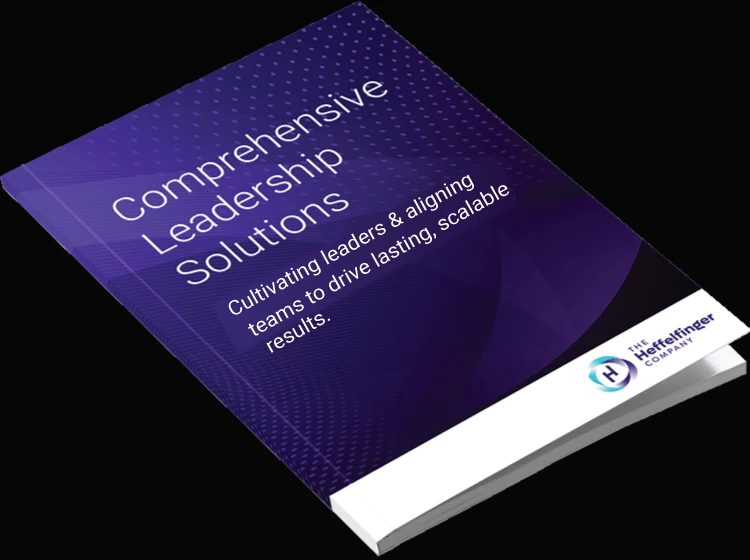"For every US $1 put into scaled-up treatment for common mental disorders, there is a return of US $4 in improved health and productivity." World Health Organization (WHO)
Are your team members feeling anxious, overwhelmed, depressed, exhausted, or even numb? If you are like us, the answer is YES! Scientists have dubbed a "crisis fatigue" as a culprit.
"Research shows that depression and anxiety in the workplace cost the global economy approximately $1 trillion per year in lost productivity. This staggering number will likely increase to $6 trillion by 2030. In the US alone, we pay a whopping $200 billion on mental disorders, many of which result in productivity loss." (Chronus.com)
There are many factors simultaneously taking place that it is no wonder we are feeling heavy emotions and exhaustion. With the pandemic (now six months in), protests for racial justice, masks debates, political arguments, economic stress, etc. we have an increase in the release of cortisol and adrenaline (ideal for fight-or-flight response). In addition, there are many people experiencing grief and loss from loss of friends or family, loss of a job, not making enough money, or inability to connect with friends and family.
And, yes, many of our clients tell us that they see an increase in productivity with specific teams and functions. And yet, our HR clients and colleagues are reporting an increase in depression and anxiety amongst their employee populations potentially caused by a variety of factors such as:
1. Parents are managing the complexity of working from home, homeschooling, and kids who are suffering a lack of socialization.
2. Employees are attempting to replicate their offices at home with limited success (of course, some have had amazing success.
3. Younger/newer employees are missing out on the mentoring/career development and socialization of in-person work.
4. Isolation and loneliness, especially for those living alone.
5. They are overworking or engaging in hypervigilant activities to be "on" for employees, lest they be considered for reductions in force.
6. Loss/sickness of loved ones due to COVID-19 or other illnesses during the pandemic, political divisiveness coming to work and getting in the way of friendships and families, and social unrest.
Yes, this is a grueling time!
Crisis Fatigue
We need to recognize that our employees (and ourselves) are most likely is "crisis fatigue." When our bodies remain in a crisis mode, it can wreak havoc on our physical and mental wellbeing, causing anxiety, depression, insomnia, poor decision making, burnout, and more, including breakdown.
According to researchers at Ohio State University (OSU), "crisis fatigue" is a "phenomenon that occurs as the body attempts to adapt after feeling overwhelmed and stressed." Scientists believe that this phenomenon occurs when environmental causes put the body's natural stress response into overdrive.
According to an article by Brad Russell, Harvard Medical School researchers have identified four stages of crisis fatigue:
1. Heroic Stage: Individuals band together at the onset of a crisis to determine how to survive.
2. Honeymoon Stage: The reaction to initial success that occurs when individuals feel that they are "in the same boat" as others who are also taking the same steps necessary for survival
3. Disillusionment Stage: Individuals begin to feel physically and emotionally exhausted. Cue the onset of the allostatic overload. Hypervigilance now turns into irritation, rage, or despair.
4. Fatigue Stage: By design, the human body cannot sustain high levels of cortisol and adrenal for long periods. This results in burnout, which can cause a person to be easily triggered or completely withdrawn. It is also the stage when people are more likely to engage in risky behaviors that are detrimental to themselves or others—hence the onslaught of alcohol abuse, drug overdoses, and suicide.
We are hearing many of our clients' employees are in Disillusionment and Fatigue Stages right now.
Russell also points out that the Symptoms of "crisis fatigue" can occur as early as two weeks and most commonly occur within a few months of dealing with a high-stress situation. Common signs of crisis fatigue:
- Hyper-Arousal – This is a state of high anxiety in which a person feels jumpy and triggered. Some people exhibit this sign through excessive crying (without having a specific reason) or high irritability during their daily routine.
- Withdrawal – This occurs when a person withdraws and demonstrates zero response to external stimuli. Scientists warn that this symptom can go unnoticed (especially in communities with mandated lockdown or quarantine).
- Altered Sleep Patterns – Many people with crisis fatigue either sleep too much or too little. This can result in headaches, weight changes, and debilitated health in general.
- Altered Eating Habits – Crisis fatigue can result in loss of appetite or stress eating to cope.
- Disruptive Behavior – Some people with crisis fatigue report feeling that they behave "out of character" as a way of processing the new normal.
Kübler-Ross Grief Cycle
Your team may be going through grief due to loss of some sort. In Elizabeth Kübler-Ross' model (1969), there are five stages of grief: denial, anger, bargaining, depression, and acceptance.
People do not grieve in any set order, and they are not linear. We may experience all or some. Ironically, or not, many of the same symptoms of "crisis fatigue" are the same as grief: crying, headaches, difficulty sleeping, anxiety, fatigue, stress as well as questioning life purpose, isolation, and questioning spiritual beliefs.
We believe it is super important now,
that you as leaders are paying extraordinary attention
to your employees and teams!
For their mental health and sense of wellbeing,
your peace of mind, and your organization's vitality.
Here are some suggestions on how to have conversations with your employees in these areas:
Ways to Support Social and Emotional Well-Being
1.Spend time with your employees!
- First show empathy (probe to see how they are doing, really listen)
- Then help employees manage their stress
- Create an empathic and caring culture that promotes healthy organizational attributes such as those of The Five Behaviors™: especially vulnerability-based trust. Be vulnerable yourself so your employees will open up to you.
2.Encourage and practice Mindfulness at work: 8 Mindfulness App to Use at Work.
- Lead by example so you can teach as you practice. You can reference Leading with Mindfulness and the COAL method.
- At the beginning of a meeting, allow a couple of minutes to engage in contemplative practice: meditate (even for one minute), set intentions, and take a few deep breaths.
- Encourage employees to start their day with 10-30 minutes of meditation and set their intentions for the day for themselves, their family, and work. According to research, we release the most Cortisol (stress hormone) as soon as we wake up in the morning.
- Practice Gratitude: Encourage employees to start and end their day with what they are grateful for. You can also begin meetings with one thing they are thankful for, and one thing that is giving them angst.
- Encourage taking breaks and breathing. You can suggest the Pomodoro technique (work 25-minutes, take a 5-minute break to stretch, breathe, take a quick walk).
3. Enable Continuous Learning
- Hire an executive coach for them. At the very least, provide coaches, they can hire themselves if your organization does not have these programs.
- Teach resiliency skills.
- Develop your and their leadership skills so they can support employees, too.
- Teach them the SCARF Model using brain science.
4. Spur connectedness:
- Encourage office friendships. One study found that friends on a team outperform teams of strangers.
- Encourage or provide or create Employee Resource Groups (ERGs) and other groups/circles to provide time for connection and emotional support.
5. Establish flex work hours and prioritize time off
6. Create a buddy system
7. Encourage physical activity (especially in nature) – one of the number one ways to reduce excess cortisol
8. Encourage therapy/make it easy for your employees to find therapy resources online
What is your organization doing for social & emotional wellbeing?
P.S. We are excited to share our newest offering of Gatherings for Teams and Groups: In 90-minutes (virtual or in-person), participants find meaningful connection, greater focus, restored wellbeing, strengthened commitment, and improved ability to contribute at work and in life.
Every Gathering features a different theme which can be customized, though shares a common framework:
- Person to person connection for emotional health
- Meaningful conversations to process experiences
- Evidence-based mindfulness practices
- Infusion of the arts through music or poetry
Please ask us more about Gatherings for your teams. We genuinely want to support you and your teams during this time. Email or call us (below) to schedule a time to explore solutions for your teams.
Be well and lead wholeheartedly!
Lori and James
Lori Heffelfinger, MSOD, PCC & James Jackman, MSOD







